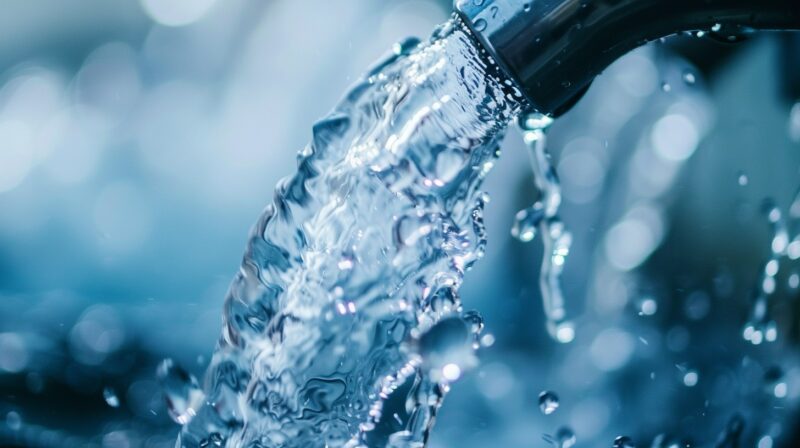The concept of thermal pollution became widely recognized during the mid-20th century when the rapid industrial expansion led to increased use of water for cooling in power plants and factories. Thermal pollution occurs when the temperature of a natural water body changes significantly, which can severely impact aquatic life and water quality.
The primary causes of thermal pollution are natural events and human activities such as discharging warm wastewater and using water for industrial cooling.
Identifying these key drivers is crucial for addressing the harmful effects of thermal pollution on the environment.
Interesting Fact: The issue of thermal pollution was first widely recognized in the 1960s when industrialization and the construction of large power plants began to affect local aquatic ecosystems.
12. Industrial Cooling Systems
One of the most significant contributors to thermal pollution is the use of water as a cooling agent in industrial processes. Power plants, factories, and other industrial facilities often use water to cool machinery.
The process involves drawing water from a nearby source, passing it through the machinery to absorb heat, and then discharging the now warmer water back into the original source. This practice raises the temperature of rivers, lakes, and oceans, disturbing the local ecosystems.Interesting Fact: In 1969, the Cuyahoga River in Ohio, USA, caught fire due to pollutants, including thermal pollution, highlighting the severe impact of industrial waste on water bodies. This event played a significant role in raising awareness about thermal pollution and environmental protection.
11. Urban Runoff
Urban areas are covered with impermeable surfaces such as roads, rooftops, and pavements. These surfaces absorb heat and then release it into stormwater. When it rains, this heated water runs off into nearby bodies of water.
The influx of warm water raises the overall temperature, impacting aquatic life.
Interesting Fact: The Hudson River in New York has been significantly affected by thermal pollution from the Indian Point Energy Center, a nuclear power plant that has been operating since the 1960s. The plant uses river water for cooling and discharges heated water back into the river, impacting the local aquatic life.
10. Deforestation
Deforestation is another significant cause of thermal pollution. When trees are removed, the shade they provide is lost. This loss of shade exposes water bodies to direct sunlight, increasing their temperature.
Besides, deforestation leads to soil erosion, which can widen and shallow water bodies, further exposing them to sunlight and increasing their temperature.
9. Soil Erosion
Soil erosion, often a consequence of deforestation and poor land management, can lead to thermal pollution. When soil is eroded, it increases the sediment load in rivers and streams.
This sediment absorbs more heat from the sun, raising the water temperature. Moreover, erosion can alter the shape and flow of water bodies, making them more susceptible to temperature changes.
8. Power Generation
Everyone who thinks the world could just stop using fossil fuels on the snap of a finger should have a look at this chart. More than 80% of the world’s energy supply presently comes from oil, gas, and coal, and that number has barely changed in the past decade.
Of course we will… pic.twitter.com/eSZJ8BXxos— Sabine Hossenfelder (@skdh) December 13, 2023
Power generation, especially from fossil fuels and nuclear energy, is a major source of thermal pollution. These power plants often require large amounts of water for cooling purposes. The heated water is then discharged back into rivers, lakes, or oceans.
This sudden increase in temperature can have detrimental effects on aquatic life and the overall ecosystem.
7. Hydroelectric Dams
Hydroelectric dams can also contribute to thermal pollution. Water released from dams is often much cooler than the water downstream.
This sudden drop in temperature can be harmful to aquatic life, particularly in regions where species are adapted to warmer conditions.
Interesting Fact: The Thames River in London has faced thermal pollution issues due to industrial discharge and urban runoff. Efforts to mitigate these impacts include regulations introduced by the UK Environmental Agency in the 1970s and 1980s.
6. Natural Causes

While human activities are the primary sources of thermal pollution, natural events can also play a role. Volcanic eruptions, geothermal vents, and lightning strikes can cause sudden increases in water temperature.
These natural events, however, are less frequent and typically have localized effects compared to the widespread impact of human-induced thermal pollution.
Interesting Fact: The Mississippi River in the United States is one of the most thermally polluted rivers in the world. A 2016 study by the U.S. Geological Survey indicated that over 60% of the thermal pollution in the river came from coal-fired power plants.
5. Impact on Aquatic Life
Many aquatic species are extremely sensitive to temperature changes. Even a small rise in temperature can lead to significant changes in reproductive cycles, growth rates, and survival chances.
Thermal pollution can cause “thermal shock” in aquatic ecosystems, leading to sudden die-offs of fish and other aquatic organisms, disrupting entire food chains.
When water temperature rises or falls abruptly, it can disrupt their metabolism, reproduction, and overall survival.
Interesting Fact: A 2016 study found that the Rhine River in Europe experienced significant thermal pollution, with power plants contributing to a 3°C increase in water temperature over the past 50 years. This has affected fish populations and other aquatic organisms.
4. Decreased Dissolved Oxygen
Following the Fukushima Daiichi nuclear disaster in 2011, Japan implemented stricter regulations on thermal discharges. The power plant used large cooling towers to mitigate the thermal pollution caused by cooling the reactors.
Warmer water holds less dissolved oxygen than cooler water. As the temperature of the water increases, the oxygen levels decrease, leading to hypoxia or oxygen deficiency.
This condition can suffocate fish and other aquatic organisms, leading to massive die-offs and disrupting the ecosystem balance.
3. Algal Blooms
Thermal pollution can also lead to the proliferation of algae. Warmer water provides an ideal environment for algae to grow rapidly. Algal blooms can deplete oxygen levels in the water and release toxins that are harmful to aquatic life and humans.
These blooms can also block sunlight from reaching underwater plants, further disrupting the ecosystem.
Interesting Fact: The first Earth Day in 1970 brought significant attention to various environmental issues, including thermal pollution. It led to the establishment of the EPA and the passing of the Clean Water Act in 1972, which aimed to reduce thermal pollution among other water quality issues.
2. Migration and Biodiversity Loss

Thermal pollution can force aquatic animals to migrate in search of more suitable environments. This migration disrupts the local ecosystem and reduces biodiversity.
Some species may not be able to migrate and will perish, leading to a loss of genetic diversity and weakening the overall resilience of the ecosystem.
1. Increased Toxins
Warmer water can increase the toxicity of certain chemicals. Industrial discharge often contains pollutants that become more harmful as the temperature rises.
These toxins can have severe effects on aquatic life, leading to increased mortality rates and reproductive issues. Moreover, warmer temperatures can accelerate the breakdown of pollutants, releasing even more harmful substances into the water.
Causes of Thermal Pollution vs Solutions
Addressing thermal pollution requires a multifaceted approach. Here are some strategies to mitigate its impact:
Cooling Towers and Ponds
One effective solution is the use of cooling towers and ponds. These structures help dissipate the heat from industrial cooling water before it is released back into the environment.
Cooling towers work by maximizing the contact between water and air, allowing heat to escape through evaporation. Cooling ponds, on the other hand, provide a large surface area for the water to cool down naturally.
Water Recycling

Recycling heated water for other uses is another practical approach. Instead of discharging warm water into natural bodies of water, it can be reused for heating purposes in industrial processes, agricultural activities, or even for domestic heating.
This reduces the thermal load on aquatic ecosystems and promotes sustainable water management.
Legislation and Regulations
Governments can play a crucial role in reducing thermal pollution by implementing stringent regulations on industrial discharge.
Setting limits on the temperature of discharged water and promoting the use of advanced cooling technologies can help mitigate the impact of thermal pollution. Also, providing incentives for industries to adopt eco-friendly practices can encourage compliance and innovation.
Restoration of Vegetation

Reforestation and the restoration of riparian vegetation can help mitigate the effects of thermal pollution. Planting trees along riverbanks and lakeshores provides shade, reducing the amount of direct sunlight that reaches the water.
This helps maintain cooler water temperatures and supports the overall health of the ecosystem.
Public Awareness and Education
Raising public awareness about the causes and effects of thermal pollution is essential for driving change. Educational programs and campaigns can inform communities about the importance of reducing thermal pollution and encourage sustainable practices.
Individuals can also contribute by conserving energy, supporting clean energy initiatives, and advocating for stronger environmental regulations.
Conclusion
In 2024, the Causes of thermal pollution are a matter of pressing importance. Thermal pollution is a critical environmental issue that demands urgent, comprehensive action. By addressing the root causes, we can protect aquatic ecosystems. Solutions include cooling systems, water recycling, robust regulations, vegetation restoration, and public awareness.
Power producers, industries, and urban developers must adopt eco-friendly practices. Governments must enforce standards and incentivize sustainable technologies. Communities must unite to foster environmental stewardship. With a coordinated, multi-stakeholder approach, we can mitigate thermal pollution and safeguard our waterways and planet.

